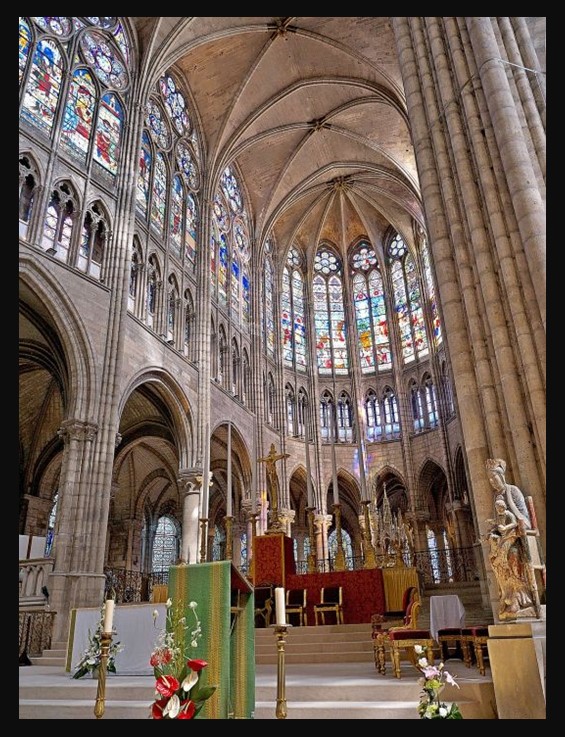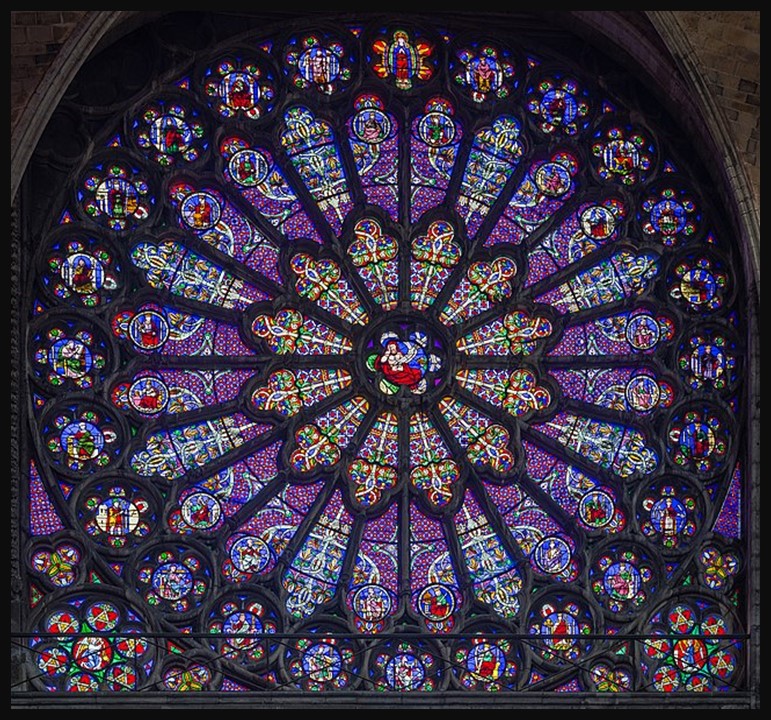
https://dianadarke.com/tag/saint-denis/
The Gothic period, spanning roughly from the 12th to the 16th century, was a transformative era in the history of art and architecture in Europe. Characterized by a departure from the preceding Romanesque style, the Arts of the Gothic Period sought to reach new heights—both literally and figuratively. One of the defining features of Gothic architecture is the Pointed Arch, allowing for taller and more graceful structures, exemplified in the soaring cathedrals that stand as iconic symbols of the period. Ribbed vaults and flying buttresses became integral elements, enabling the construction of large, light-filled interiors. Intricately detailed Stained Glass Windows played a crucial role in illuminating these spaces, with vibrant scenes from biblical narratives or depictions of saints. Sculpture, too, flourished during this period, with an emphasis on naturalistic forms and intricate detailing. The Gothic arts, including illuminated manuscripts and panel paintings, often reflected the religious fervor of the time, showcasing a blend of piety and artistic innovation. The Gothic period remains a testament to the creative and spiritual aspirations of medieval Europe, leaving an enduring legacy in its architectural masterpieces and finely crafted artworks.
Architecture
Gothic architecture, prevalent in Europe from the 12th to the 16th century, is characterized by its soaring verticality, pointed arches, ribbed vaults, and flying buttresses. In contrast to the massive and solid structures of Romanesque architecture, Gothic buildings exhibit a sense of upward movement and lightness. The pointed arches, a departure from the round arches of the Romanesque style, allowed for greater height and grace in the design. Ribbed vaults and pointed arches not only added aesthetic elegance but also distributed the weight of the roof more efficiently. The flying buttresses, external supports resembling arched piers, played a crucial role in supporting the walls and allowed for expansive windows, often featuring intricate tracery. These large stained glass windows, a hallmark of Gothic cathedrals, flooded the interiors with colored light, creating an ethereal and transcendent atmosphere. Overall, Gothic architecture represents a departure from the solid and fortress-like structures of the Romanesque period, embracing a vertical and ornate style that reflected a spiritual aspiration toward the divine.
Sculpture
Gothic sculpture is characterized by its intricate detailing, expressive figures, and a heightened sense of naturalism. Gothic sculptors moved away from the stylized forms of the preceding Romanesque period, instead focusing on capturing the human form with greater realism and emotion. Figures in Gothic sculptures are often elongated, with graceful, flowing lines that impart a sense of movement. Sculptures adorning cathedrals and other Gothic structures often depict biblical scenes, saints, and grotesque gargoyles. The use of drapery became more elaborate, creating dynamic and lifelike folds. Moreover, Gothic sculptors employed deep relief and innovative techniques, such as “stiff leaf” carving and elaborate tracery, contributing to the overall sense of delicacy and intricacy in their work. These sculptures not only served a decorative purpose but also played a didactic role, conveying religious narratives and moral lessons to a largely illiterate medieval audience.

Stained Glass Windows
Gothic Stained Glass Windows, a defining feature of medieval cathedrals and churches from the 12th to the 16th century, are characterized by their vibrant colors, intricate tracery, and narrative depictions. These windows played a crucial role in Gothic architecture, allowing the infusion of light into the sacred space while serving as a visual storytelling medium. Unlike the smaller and simpler windows of earlier periods, Gothic Stained Glass Windows became expansive, featuring elaborate tracery patterns that divided the glass into intricate segments. The use of intense, jewel-like colors, achieved through the inclusion of metallic oxides in the glass, created a breathtaking visual effect when illuminated by sunlight. Scenes from the Bible, the lives of saints, and other religious narratives were vividly portrayed, often covering entire walls and transforming the interior of the church into a luminous and ethereal space. The intricate craftsmanship of these windows, combined with their symbolic and narrative richness, reflects the Gothic era’s emphasis on transcending earthly confines and conveying spiritual narratives through the play of light and color.
For a PowerPoint on French Gothic Art, please… Check HERE!
Bibliography: https://smarthistory.org/gothic-architecture-an-introduction/ and https://smarthistory.org/gothic-architecture-explained/ and http://www.visual-arts-cork.com/sculpture/gothic-sculpture.htm#characteristics and https://www.khanacademy.org/humanities/medieval-world/gothic-art/beginners-guide-gothic-art/a/stained-glass-history-and-technique and https://buffaloah.com/a/DCTNRY/stained/gothic/gothic.html